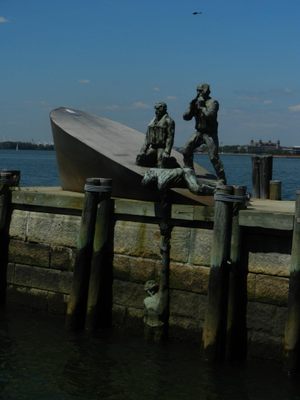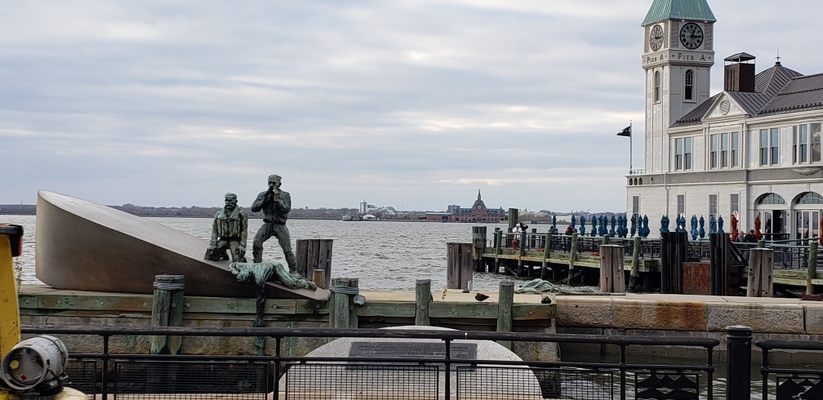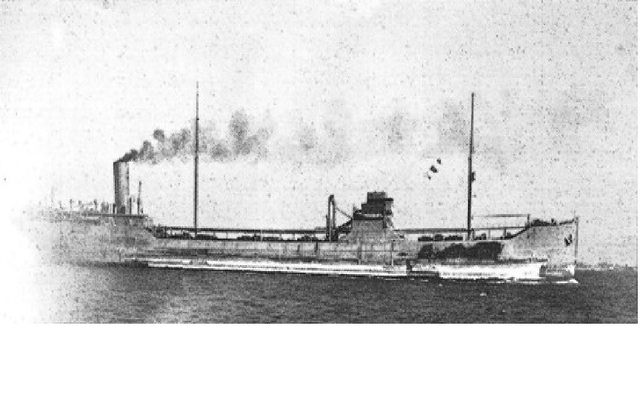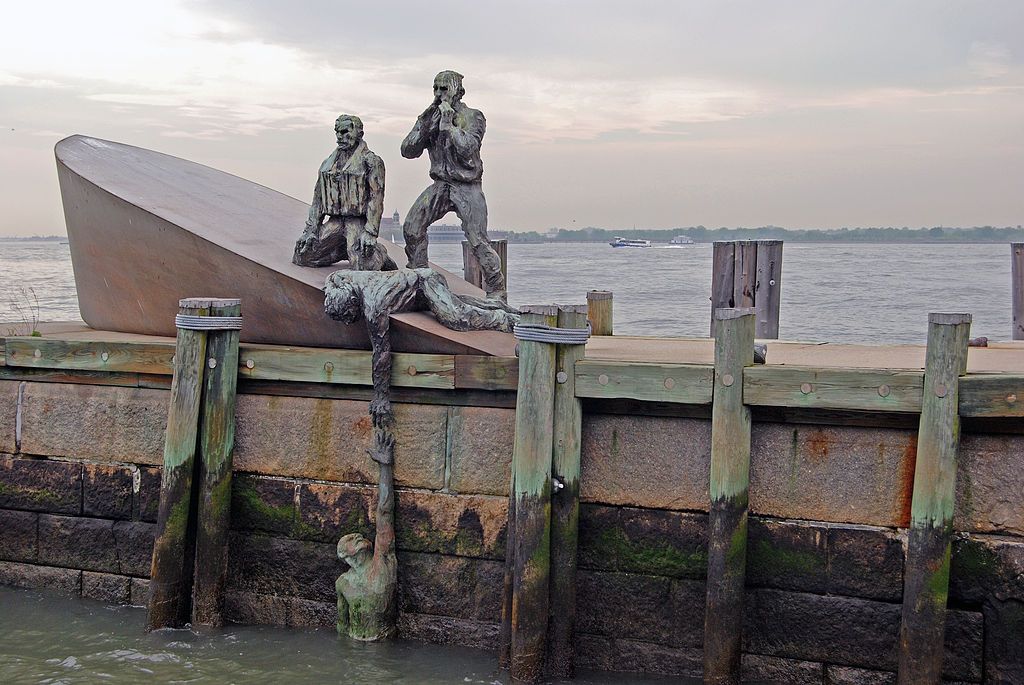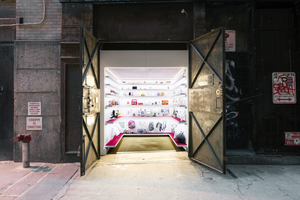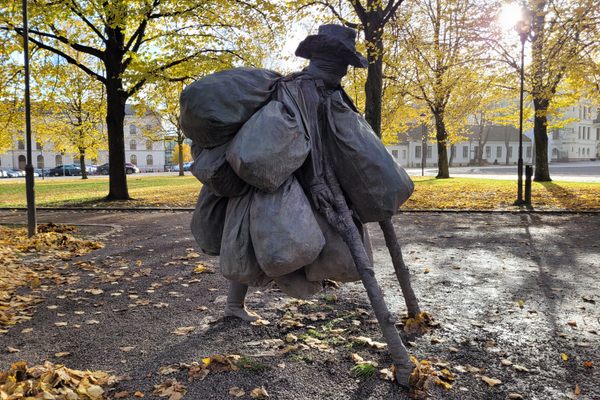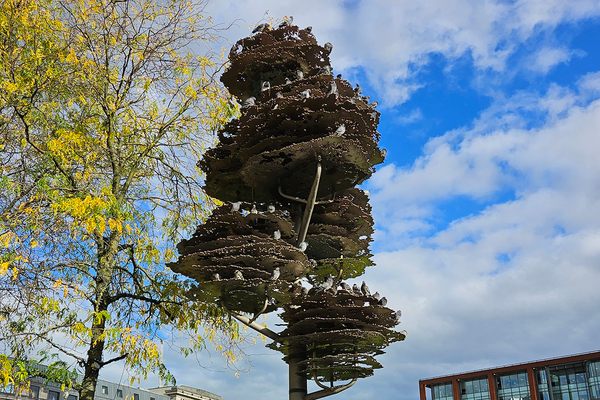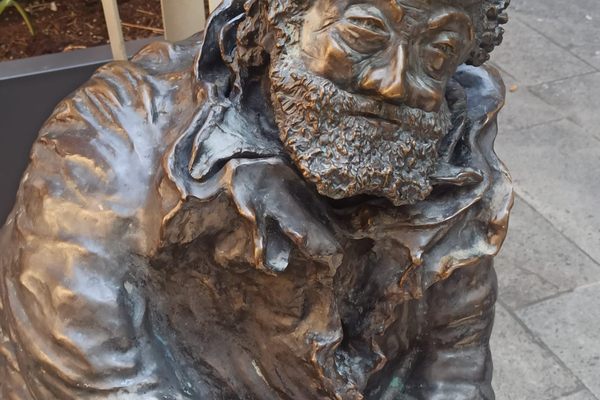About
Hidden away in the water off Battery Park is one of the most moving memorials you are ever likely to see. The American Merchant Mariner's memorial, sculpted by Marisol Escobar in 1991, takes the form of three merchant seamen stranded on a sinking ship, terrified, calling for help and trying to reach the desperate hand of one of their shipmates floundering in the water below.
The United States Merchant Mariner suffered more casualties than any other American service during World War II, 1 of every 26 mariners would not return home. Facing submarines, mines, armed raiders, destroyers, aircraft, "kamikaze," and the elements. About 8,300 mariners were killed at sea, 12,000 wounded of whom at least 1,100 died from their wounds, and 663 men and women were taken prisoner. Some were blown to death, some incinerated, some drowned, some froze, and some starved. Sixty-six died in prison camps or aboard Japanese ships while being transported to other camps. Thirty-one American merchant ships vanished without a trace to a watery grave.
The sculpture bears the following inscription: "This memorial serves as a marker for America's merchant mariners resting in the unmarked ocean depths." The monument is based on a true event, the sinking of SS Muskogee by German U-boat 123 on March 22nd, 1942. The Muskogee was sailing from Venezuela to Halifax carrying a cargo of petroleum. Without an escort and unarmed, the Muskogee was hit by a torpedo in her engine room and began to sink within a quarter of an hour, 335 miles north-northeast. Ten survivors clung to life rafts in the burning sea as the U-boat surfaced. The submarine captain Reinhard Hardegen took their photograph, and it's from this, that Escobar based her sculpture.
What makes the memorial so moving is that the helpless sailor in the water is covered by the Upper New York Bay with each high tide. His fingertips permanently out of reach to his companions, he drowns twice a day. The plaque next to the memorial makes the striking statue all the more poignant, where we learn that for the crew of the SS Muskogee; "left to the perils of the sea, the survivors later perished."
Related Tags
Know Before You Go
M20, M22 or 1 train. It is difficult to get close. There are barricades used for line queuing directly in front of the statue.
Community Contributors
Added By
Published
October 2, 2014





